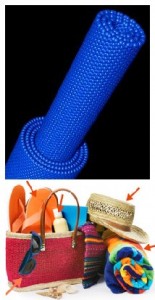 Hundreds of consumer products containing nanoparticles are already on the shelves, but almost nothing is known about their effects on human health or their potential side effects when released into the environment.
Hundreds of consumer products containing nanoparticles are already on the shelves, but almost nothing is known about their effects on human health or their potential side effects when released into the environment.
Nanotechnology is the science of the incredibly small — structures around 1000 times smaller than the width of a human hair. Particles of ordinary materials can behave in unusual and very unexpected ways when their size is reduced to this infinitesimal scale. Electrical, chemical and mechanical properties change, making — for example — opaque substances turn transparent, eliminating friction or creating antibacterial properties.
Globally, there are over 800 manufacturer-identified consumer products that contain nanoparticles on the market, including lipsticks, face creams, sunblocks, eyeglasses, clothing, food products, washing machines and other electronic devices. Currently, there are no regulations on their import, labelling or distribution, and a handful are also made in New Zealand.
Because of unique properties of these novel materials, current safety standards are ill-equipped to assess their risks. Can the industries involved self-regulate? Or do we need new laws to protect consumers and the environment?
In this Science Media Centre briefing, organisers of a recent workshop on nanotechnology in the New Zealand context will share their findings on these issues and the science behind them. The briefing will coincide with the public release of a report containing participants’ recommendations.
Click on the player below to listen back to the briefing. Registered journalists can log into the SMC Resource Library to download the presentations.
Part 1
[audio:https://www.sciencemediacentre.co.nz/wp-content/upload/2009/07/nanotech-briefing-part-1.mp3]Part 2
[audio:https://www.sciencemediacentre.co.nz/wp-content/upload/2009/07/nanotech-briefing-part-2.mp3]SPEAKERS:
Dr Simon Brown, Associate Professor of Physics, University of Canterbury: Dr Simon Brown is part of the Nanostructure Engineering Science and Technology (NEST) Group at the University of Canterbury, which is engaged in research into the fabrication and properties of a variety of nanometre-scale structures. His main research interest is in developing nano-electronic devices, such as chemical sensors and transistors, from particles called ‘atomic clusters’.
Simon Wright, Senior Science Analyst, Ministry for the Environment: Simon Wright has worked for seven years with the Ministry for the Environment, most recently as secretariat of the Toi te Taiao: the Bioethics Council. Prior to that, he spent 10 years as a consulting chemical engineer in NZ and UK, including 4 years as a ‘nanotechnologist’ developing a new process for making paint pigment.
BRIEFING DETAILS:
DATE: July 9
START TIME: 10am (dial in five minutes beforehand)
DURATION: Approx 30 minutes
VENUE: Phone and online
To speak to New Zealand researchers and experts on this topic, please contact the Science Media Centre on tel: 04 499 5476 or email: smc@sciencemediacentre.co.nz.